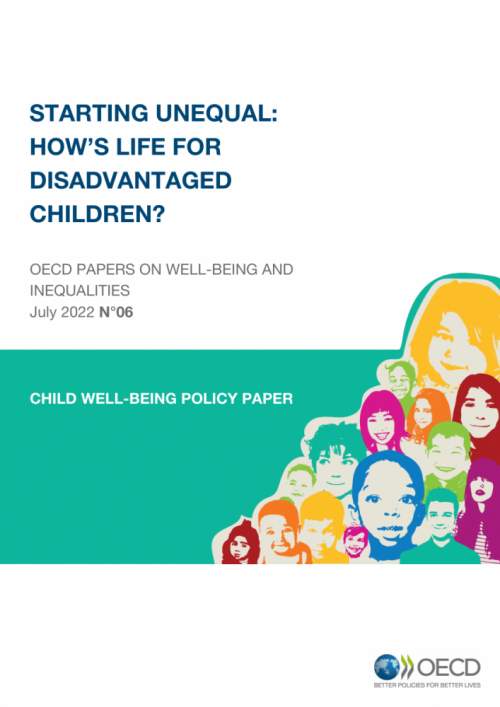
https://www.oecd.org/wise/Starting-unequal-How-is-life-for-disadvantaged...
Children from socially and economically disadvantaged backgrounds are more likely to experience poor material outcomes, poor health, and do worse in their education. They also report poorer social and emotional outcomes, including lower self-belief, lower life satisfaction, and are more likely to report multiple health complaints.
• These early well-being inequalities are rooted in the poorer environments that socially and economically disadvantaged children face at home, in school, and in the community – challenges that make social inequalities in child well-being outcomes particularly difficult to address.
• Because different areas of child well-being and different aspects of children’s lives are frequently interconnected, children need consistent support across all domains if they are to see real changes to their life experiences and outcomes. Tackling the effects of childhood disadvantaged requires government administrations and key stakeholders to share a common understanding and work together towards common goals.
• Child well-being indicators are key to developing a common information base that can be used to identify challenges and set policy priorities. The OECD Child Well-being Dashboard and Data Portal show the potential at the international level of using child well-being indicators to shed light on many important disparities in child well-being between and within countries.
Disadvantaged children fare worse in almost all well-being areas
The indicators presented in Starting Unequal show that, across well-being areas, children from socially and economically disadvantaged backgrounds frequently experience worse outcomes than their more advantaged peers.
For example, children from disadvantaged backgrounds: • still too often lack access to basic material necessities, including basic food and nutrition, goodquality housing, and modern necessities like the internet.
For example, on average across European OECD countries, more than 10% of low income children are living in very poor quality housing.
• are more likely to experience poor health outcomes, with those with low socio-economic status over-represented among children reporting poorer self-rated health, as well as among overweight and obese children.
On average across OECD countries, more than one in six disadvantaged 11-, 13-, and 15-year olds rate their own health as only “fair” or “poor”, compared to one in ten among the most advantaged.
And, around 25% of disadvantaged children in this age group are considered overweight or obese based on the World Health Organization’s definition, compared to 16% from the most advantaged households. • do worse in education.
They are far less likely to perform well on international student assessments, such as OECD PISA. For instance: on average across OECD countries, only 6% of disadvantaged 15-year-olds reached “top performer” status on the OECD PISA tests, compared to 29% among the most advantaged.
They are also far more likely to report limited ambitions for future education.
• more often report poorer social and emotional outcomes, including weaker perceived support from family, lower self-belief, and lower life satisfaction.
On average across the OECD, as many as 19% of disadvantaged 15-year-olds report low satisfaction with their life as a whole, compared to 14% among the most advantaged, with gaps as large as 10 percentage points in some countries.










Add new comment